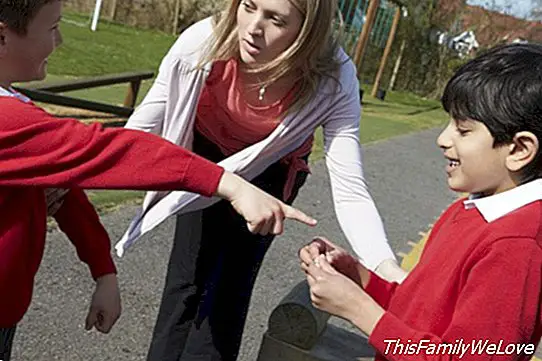The schoolyard, a place to educate
During the classes, boys and girls work together and establish relationships of camaraderie and cooperation under the eyes of an educator. Of the 8 hours on average that a student spends in a school, three and a half hours, that is, 43.7 percent, passes them in the yard, if we also count the after-lunch recess. However, in the recreational periods in the schoolyard is when the problems of coexistence in the school arise.
Problems in the school yard
1. Abuses of power. It is where abuses of power increase between older and younger children, of boys over girls and of more aggressive students over quieter ones.
2. Assaults, insults and threats. Some use the schoolyard as a stage to solve their differences using physical aggression, insults and threats.
3. Bad distribution of space. Soccer usually occupies the widest area of the playground, leaving little space for other students with other interests or activities.
Plus:
- It shows that the generational learning of popular or street games has been lost.
- It is perceived that the situation of rejected or forgotten children is becoming more acute.
- Many conflicts are intensified due to lack of basic education standards such as asking for, or apologizing.
In many schools, in addition, it is necessary to use the post-recess class to deal with the conflicts that are generated during that time.

Therefore, the schoolyard It should also be a place where the school supports a series of learning related to the personal and social development of the students, which will directly influence the type of relationships that will be established with their peers, in their ability to integrate into a group. .
In the schoolyard, peer interactions are stronger when not facing a teacher. Therefore, although it can not be controlled, it is necessary to educate, enable the personal development of each student and their integration so that situations of bullying or rejection do not occur. A lack of intentional intervention from the team of educators, in practice, is often replaced by abuses of power, independence or exclusion.
How to turn the schoolyard into an educational space
1. I work in tutorials. Work with the students the topics of assertiveness, attitudes of respect and cooperation, solidarity, non-discrimination based on sex ...
2. Resolution of conflicts. Observe those who have problems of integration or are subject to discrimination to help them from the departments of psychology or guidance to those who need to improve their social competence.
3 Mediation. Conflict can be an opportunity for personal and collective improvement when it is resolved through dialogue, negotiation and mediation. It is a necessary step in learning the culture of peace.
Means to make the schoolyard an educational space
1. Training It must consist of moments of group reflection, commented reading of texts and talks by experts.
2. Group tutoring. Space to act through mediation for positive resolution of conflicts.
3. Organizational aspects. They are based on the organization of the time of recreation in participative and collaborative games directed by monitors so that the children enjoy the leisure time and know a great variety of games.
Teachers in general are aware that the schoolyard is the ideal space to put into practice social skills such as assertiveness and empathy, and teach moral values in practice.
Marisol Nuevo Espín




